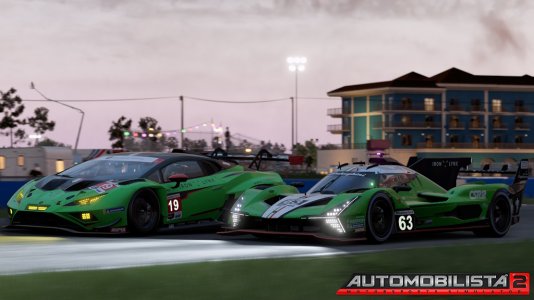Sk3ptik0n
Premium
I just purchased the Trustmaster T-LCM load cell pedals and I am having some issues getting used to them.
Primarily, I'd like to hear from other users if my impression of this pedals (and the load cell in particular) are correct or if I maybe have a defective load cell.
For starters, the stock springs are very soft and the harder springs are not much better either, so for about 50% of the brake force the load cell effectively measures distance as opposed to pressure. That seems to defy the purpose.
I decided to try a trick I used with my old G25 brake, which was to augment the spring with rubber stoppers. That makes the pedal much more alike a real brake pedal, but then I noticed that regardless of springs or rubber stoppers, the brake is very difficult to modulate between 100% and about 25%.
While reviewing replays in ACC (and others, but ACC makes it easier) I noticed that if I pushed the pedal all the way, I'd get 100% brake pressure, but when I tried to release some of the braking force, it would drop well below 50% and more often around 25 to 30%.
I should also note that when first pushing on the pedals, is pretty easy to arrive at around 80% of pressure and takes additional force to reach 100%, but releasing the pedals they tend to drop very quickly from 100% to 25/30%.
I tried all kind of adjustments, but it seems that the load cell is simply not that precise in the range between 25% and 100% which makes trail braking very difficult. I suspect that either the springs or the rubber stoppers my be releasing energy too abruptly after reaching 100% braking, since I can sort of modulate on the way up, but not on the way down.
I hadn't been simracing for a while and I just came back to it, but I seem to remember that one of the sims (rFactor maybe? or iRacing?) had the ability to modulate the pedal force with a curve. I think that would help in allowing me to better apply pressure.
At the moment it's just too hard to modulate the brake effectively. The difference between 100% and 25% seems to be minimal, so it is really hard to apply 75% pressure and it's even harder to gradually scale back pedal pressure for trail braking.
Is this something others have noticed?
Unfortunately, I don't have a way to compare my pedals to other brands and before I contact Thrustmaster I wanted to hear from someone else if this is an issue with all their pedals or just mine.
Also, if anyone is interested in seeing pictures of my mods, I'll be happy to add them to the post.
Thank you.
Primarily, I'd like to hear from other users if my impression of this pedals (and the load cell in particular) are correct or if I maybe have a defective load cell.
For starters, the stock springs are very soft and the harder springs are not much better either, so for about 50% of the brake force the load cell effectively measures distance as opposed to pressure. That seems to defy the purpose.
I decided to try a trick I used with my old G25 brake, which was to augment the spring with rubber stoppers. That makes the pedal much more alike a real brake pedal, but then I noticed that regardless of springs or rubber stoppers, the brake is very difficult to modulate between 100% and about 25%.
While reviewing replays in ACC (and others, but ACC makes it easier) I noticed that if I pushed the pedal all the way, I'd get 100% brake pressure, but when I tried to release some of the braking force, it would drop well below 50% and more often around 25 to 30%.
I should also note that when first pushing on the pedals, is pretty easy to arrive at around 80% of pressure and takes additional force to reach 100%, but releasing the pedals they tend to drop very quickly from 100% to 25/30%.
I tried all kind of adjustments, but it seems that the load cell is simply not that precise in the range between 25% and 100% which makes trail braking very difficult. I suspect that either the springs or the rubber stoppers my be releasing energy too abruptly after reaching 100% braking, since I can sort of modulate on the way up, but not on the way down.
I hadn't been simracing for a while and I just came back to it, but I seem to remember that one of the sims (rFactor maybe? or iRacing?) had the ability to modulate the pedal force with a curve. I think that would help in allowing me to better apply pressure.
At the moment it's just too hard to modulate the brake effectively. The difference between 100% and 25% seems to be minimal, so it is really hard to apply 75% pressure and it's even harder to gradually scale back pedal pressure for trail braking.
Is this something others have noticed?
Unfortunately, I don't have a way to compare my pedals to other brands and before I contact Thrustmaster I wanted to hear from someone else if this is an issue with all their pedals or just mine.
Also, if anyone is interested in seeing pictures of my mods, I'll be happy to add them to the post.
Thank you.









